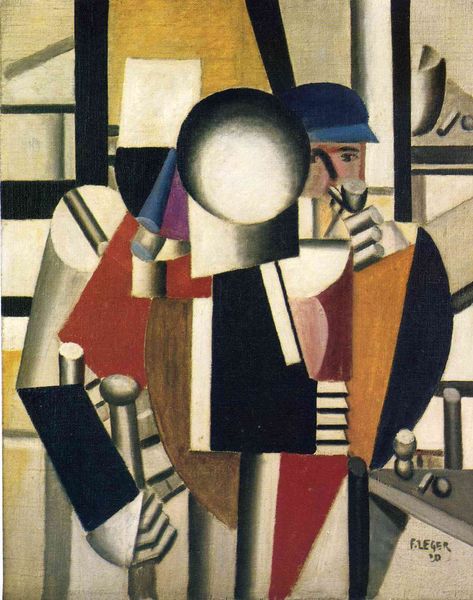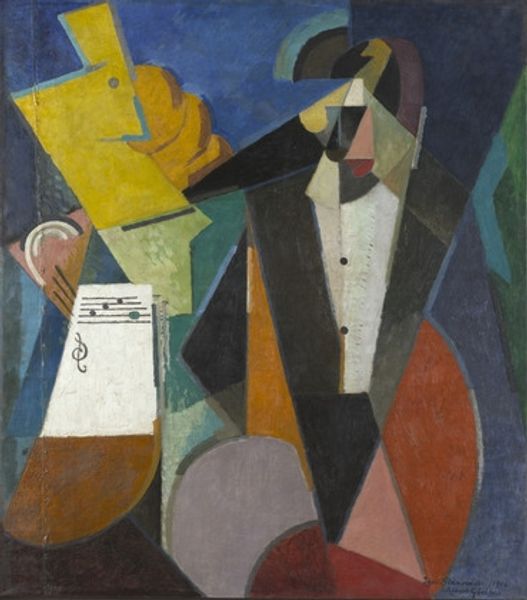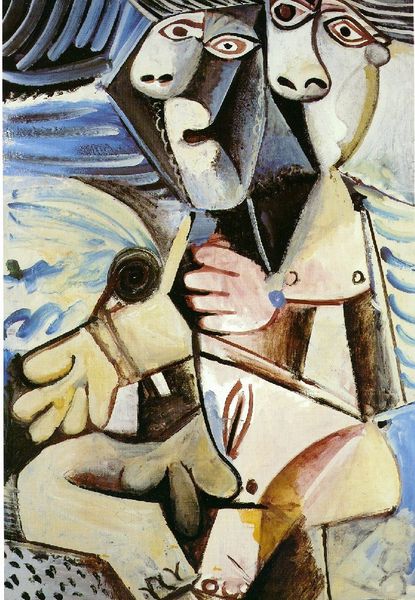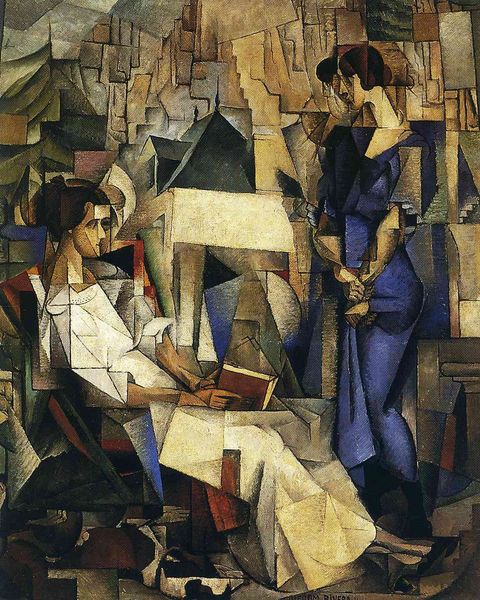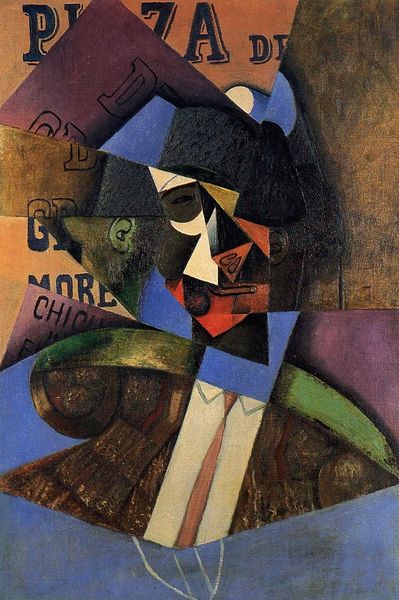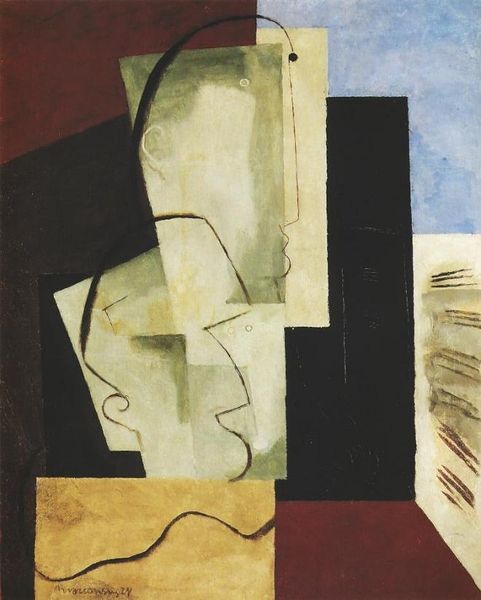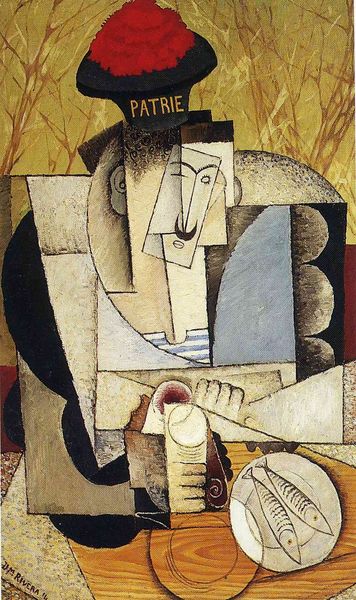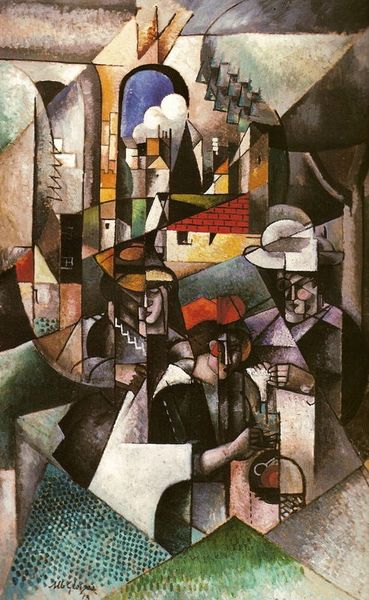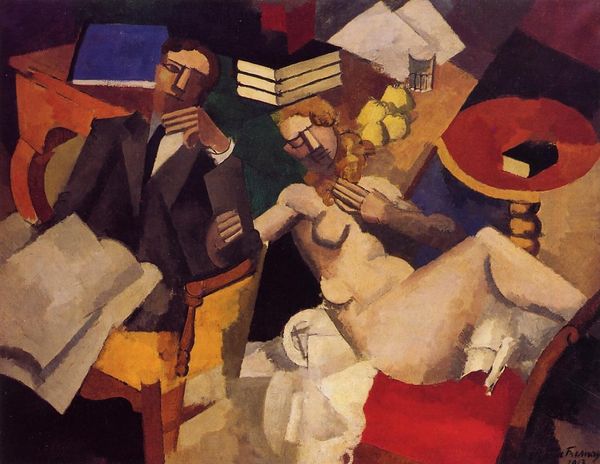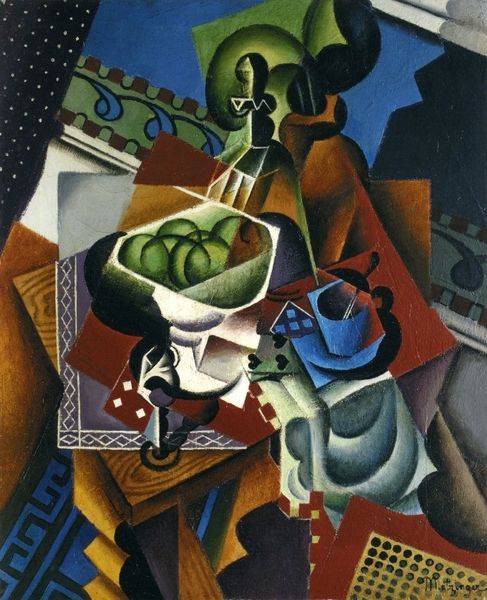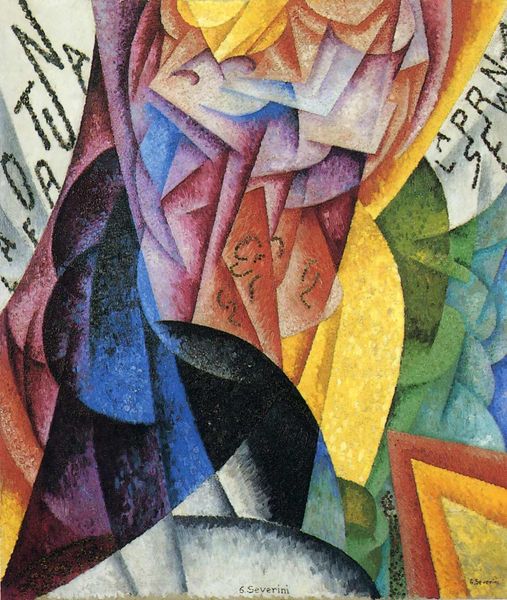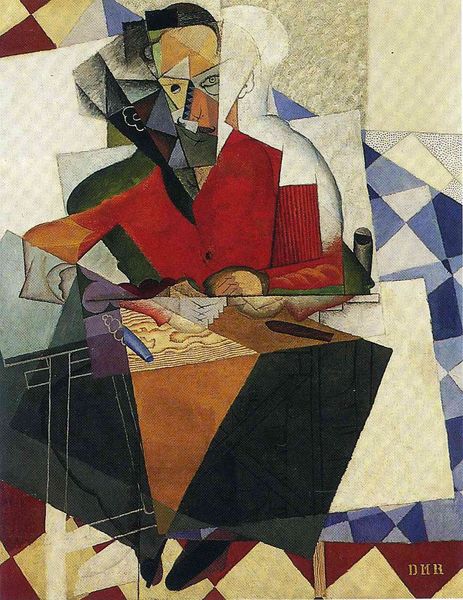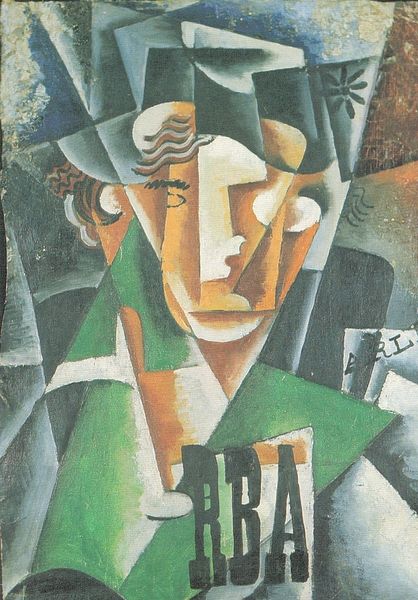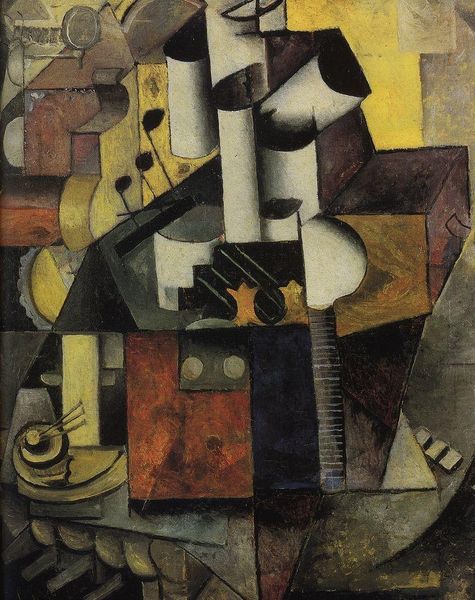
oil-paint
#
portrait
#
cubism
#
oil-paint
#
oil painting
#
studio composition
#
modernism
Copyright: Public domain US
Curator: Looking at Diego Rivera's "Portrait of Ramon Gomez de la Serna" from 1915, what strikes you first? Editor: The disjointed composition immediately pulls me in, it feels restless. There is this overwhelming sense of anxiety and perhaps an indictment of early twentieth-century portraiture, a move from static presentation. It is as if the subject, along with art itself, is being fragmented. Curator: Precisely. The choice of oil paint lends a traditional grounding, but Rivera thoroughly subverts that through his engagement with cubism. Notice how the figure blends and merges with the interior. Rivera utilizes form to dissect both sitter and his context, thus rejecting any sort of unified field, pushing back against notions of artistic labor focused on skill. Editor: And doesn’t the very choice of Ramón Gómez de la Serna—a writer, intellectual, and avant-garde provocateur of the time—speak volumes about Rivera’s own artistic and political affiliations? This is not a portrait celebrating tradition; rather, it announces a commitment to modernity, experimentation, and perhaps most pointedly a rejection of conservative culture by choosing a man dedicated to modern and innovative works, in his persona, practice, and in his personage. Curator: Indeed. Rivera meticulously constructed a portrait using fragmented shapes and perspectives. But it is not pure abstraction either. It's fascinating to see how he integrated details—the books, writing materials, and that interesting inclusion of another figure in the back—to anchor the sitter in a space both of creativity and alienation. Do you also feel like he might also comment on his own condition and labor as an artist? Editor: I completely agree, and by the look on their face it would not seem to be celebratory by any stretch of the imagination. This is not merely a visual exercise but an explicit, multi-layered assertion of identity through social and cultural statements that reflect anxieties that the intellectual is experiencing during that time period and Rivera's unique social environment and his artistic output through the language of cubism. It becomes evident Rivera is trying to challenge the political, the artistic and in fact, the very idea of representation by including literary, philosophical and revolutionary sentiments. Curator: It is amazing how a painting can reflect the transformation of both an individual and the culture that surrounded his world during a set moment in time. Editor: Rivera captures more than likeness—he reveals an intellectual and aesthetic stance. I come away appreciating the radical and intentional art.
Comments
No comments
Be the first to comment and join the conversation on the ultimate creative platform.
